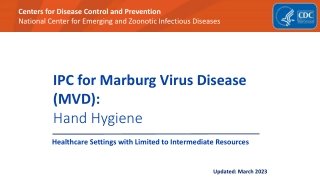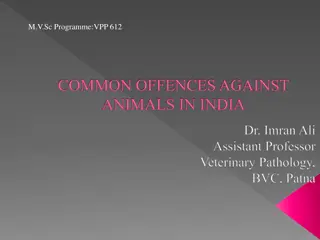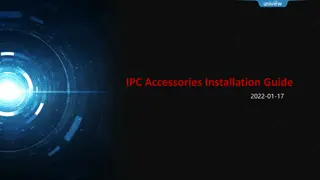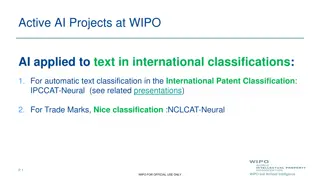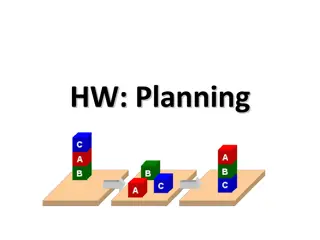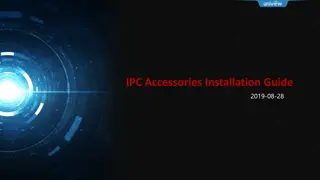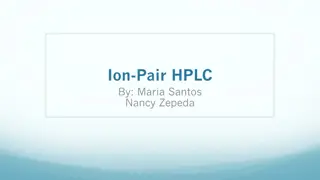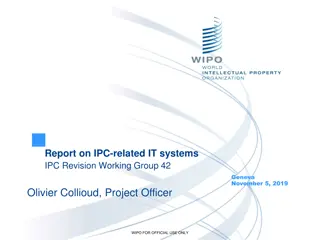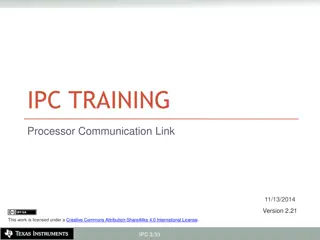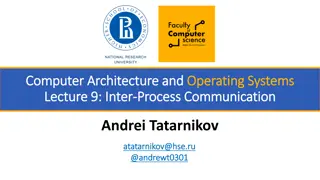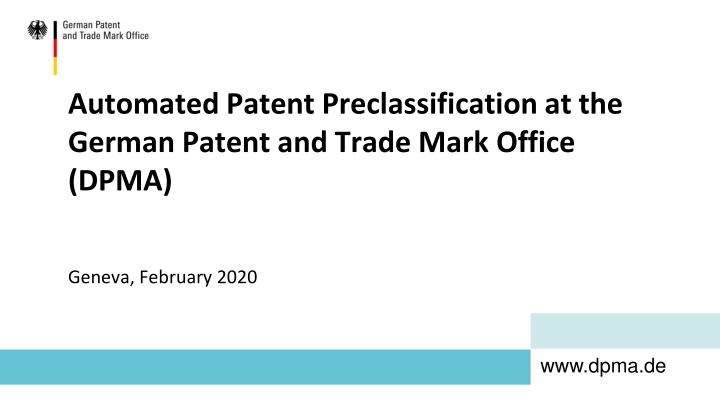
Enhancing Patent Preclassification Process at DPMA through Automation
The German Patent and Trade Mark Office (DPMA) is leveraging automation for patent preclassification using tools like e-classifier. The system assigns IPC suggestions, facilitates routing, and aids in the initial allocation of patent applications. Quality management systems ensure accurate classification with a high success rate. The new classifier employs supervised machine learning for improved efficiency and accuracy in the process.
Download Presentation

Please find below an Image/Link to download the presentation.
The content on the website is provided AS IS for your information and personal use only. It may not be sold, licensed, or shared on other websites without obtaining consent from the author. If you encounter any issues during the download, it is possible that the publisher has removed the file from their server.
You are allowed to download the files provided on this website for personal or commercial use, subject to the condition that they are used lawfully. All files are the property of their respective owners.
The content on the website is provided AS IS for your information and personal use only. It may not be sold, licensed, or shared on other websites without obtaining consent from the author.
E N D
Presentation Transcript
Automated Patent Preclassification at the German Patent and Trade Mark Office (DPMA) Geneva, February 2020 www.dpma.de
Patents and Utility Models 2018 at a glance 2 February 2020
Automated Patent Preclassification IPC The allocation of responsibilities at DPMA is based on the IPC. Therefore, the IPC is essential for the processing of patent applications. Challenges An improved new tool Better Support Customizability for automated IPC- classification of the business processes at DPMA covering various use cases at DPMA parameterisation, flexibility 3 February 2020
Pre-classification: the business process The automated patent classification tool is part of the internal electronic filing system for patents and utility models. Old e-classifier (until 30.09.2019) introduced in 2011 based on heuristic algorithms black-box solution, no interfaces, few customization possibilities (input document selection), time-consuming process The aim was and still is to allocate patent applications to individual responsible patent examiners. 4 February 2020
Pre-classification: the business process The e-classifier assigns IPC suggestions to the incoming patent application (abstract, description, claims). Intellectual initial allocation based on IPC suggestions of e-classifier coarse classification => routing to the appropriate patent examination department based on the main (i.e. most likely) classification Fine classification in the patent examination department and assignment of secondary classification symbols is the first step before patent examination by the responsible examiner. 5 February 2020
Pre-classification: the business process Quality Management System Data analysis by the statistical department of the DPMA Comparison between the output of the e-classifier and the main IPC symbol assigned in intellectual initial allocation Valid hit when one of the three IPC-suggestions of the e-classifier matches main IPC symbol assigned in initial allocation at subclass level: about 80% 6 February 2020
The new classifier is based on supervised machine learning (fastText library), is trained with publications of patent applications, granted patents and utility models from 2010 to 2019. The training collection is balanced across the IPC hierarchy classification depth depends on the number of documents available classification up to the IPC sub-group level (approx. 5000 categories). IPC-revisions (concordance lists) are considered during the training. 7 February 2020
The new classifier is in production since 1.10.2019 with full integration into the unit for digitising incoming documents of the DPMA, has probability evaluation of the classification results top prediction and three guesses , workflow (data preparation, training and evaluation) is flexible, transparent, modular with parameter configuration at each step and view of partial results, is implemented as a webservice and an Interactive Classification Tool, is no cloud service, as confidential data sets are classified. Statistical evaluation of the new e-classifier is still under development. 8 February 2020
Preliminary statistical evaluation Plot shows IPC suggestions 1,2,3 vs. IPC main class. majority (of values) on or close to principal diagonal symmetrical cluster formation off principal diagonal since the classification scheme is not always unambiguous 9 February 2020
The new classifier Interactive Classification Tool - assists the coarse classification 10 February 2020
Thank you ! Questions? ipc-de@dpma.de www.dpma.de

